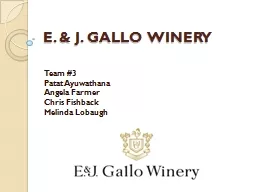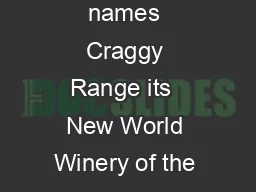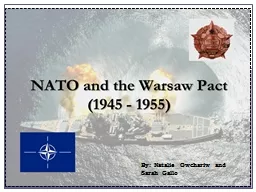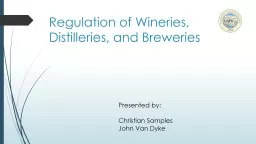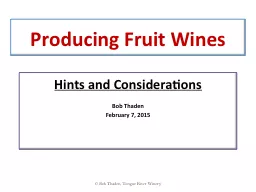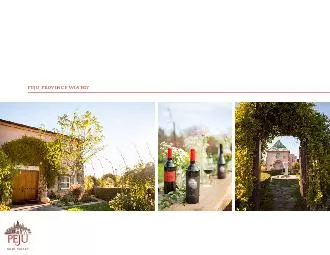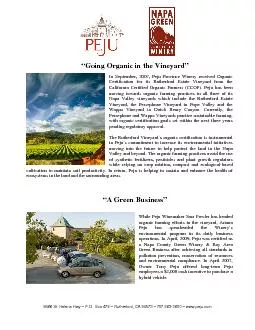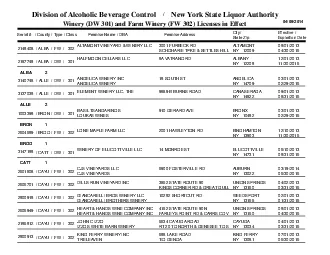PPT-E. & J. GALLO WINERY
Author : sherrill-nordquist | Published Date : 2020-01-09
E amp J GALLO WINERY Team 3 Patat Ayuwathana Angela Farmer Chris Fishback Melinda Lobaugh Background Started by 2 brothers Ernest amp Julio Gallo Modesto CA Grew
Presentation Embed Code
Download Presentation
Download Presentation The PPT/PDF document "E. & J. GALLO WINERY" is the property of its rightful owner. Permission is granted to download and print the materials on this website for personal, non-commercial use only, and to display it on your personal computer provided you do not modify the materials and that you retain all copyright notices contained in the materials. By downloading content from our website, you accept the terms of this agreement.
E. & J. GALLO WINERY: Transcript
Download Rules Of Document
"E. & J. GALLO WINERY"The content belongs to its owner. You may download and print it for personal use, without modification, and keep all copyright notices. By downloading, you agree to these terms.
Related Documents

